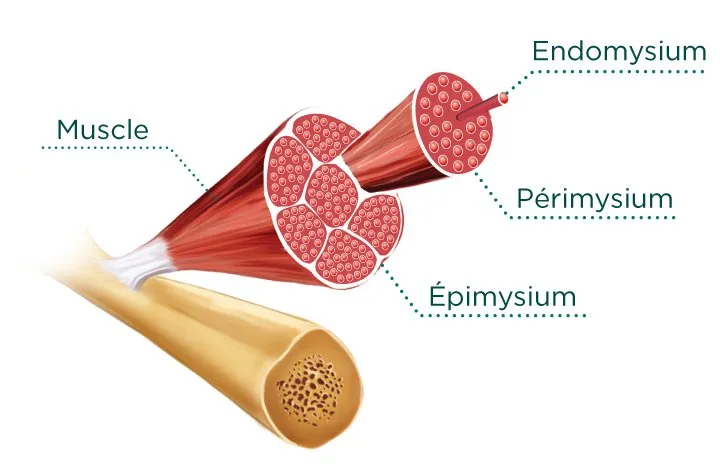One of the diseases related to a reduction of collagen in muscle is fibromyalgia.

Fibromyalgia affects the central nervous system of the body. Its affecting about 2% of Canadians, and mostly women (80%). The pain caused by this disease are felt in tissue and muscles. The main symptom is a chronic pain in one or more places throughout the body. Its diagnosis has been erroneous for a long time due to a lack of knowledge concerning the underlying pathophysiology of this disease and the lack of specific biochemical markers to diagnose it. Moreover, fibromyalgia can also be felt and relieved depending of the person affected.
Although the exact causes of this disease remain unclear, research conducted at the American College of Rheumatology and involving various samples (muscle biopsy, urine and blood test) showed disturbances in collagen metabolism and structure in people with Fibromyalgia.
These disorders are reflected in some cases by a lower amount of intramuscular collagen as well as by a remodeling of the extracellular matrix, with collagen deposits being found around the nerve fibers. This results in a lower threshold for muscle strain (structural and mechanical aspects) and a lower tolerance for pain in sensitive areas (nervous aspect). In a clinical study conducted in a small group of people suffering from fibromyalgia for 2 to 15 years, it was found that taking a ‘‘hydrolyzed collagen’’ such as Genacol Original Formula significantly lowered the average level of pain; this effect being quite significant in a subgroup of participants.
For now, there is no cure for Fibromyalgia. However, people living with this disease finds different ways to reduce their symptoms, either with natural supplements, medication or also by changing their lifestyle and stay active.
Sources :
Arthritis Society – What is Fibromyalgia?
S. T. Gronemann, S. Ribel-Madsen, E. M. Bartels, B. Danneskiold-Samsøe, H. Bliddal, Collagen and muscle pathology in fibromyalgia patients, Rheumatology, Volume 43, Issue 1, January 2004, Pages 27–31, https://doi.org/10.1093/rheumatology/keg452

